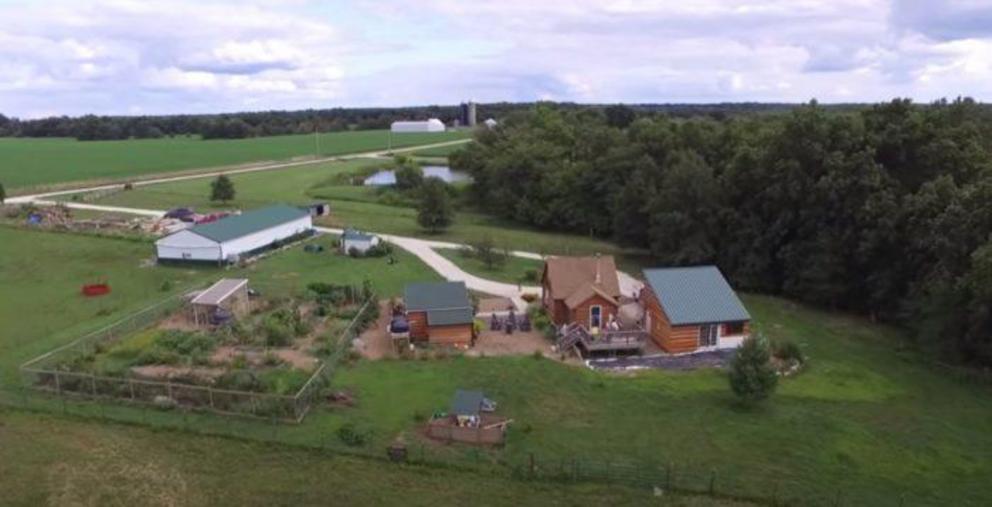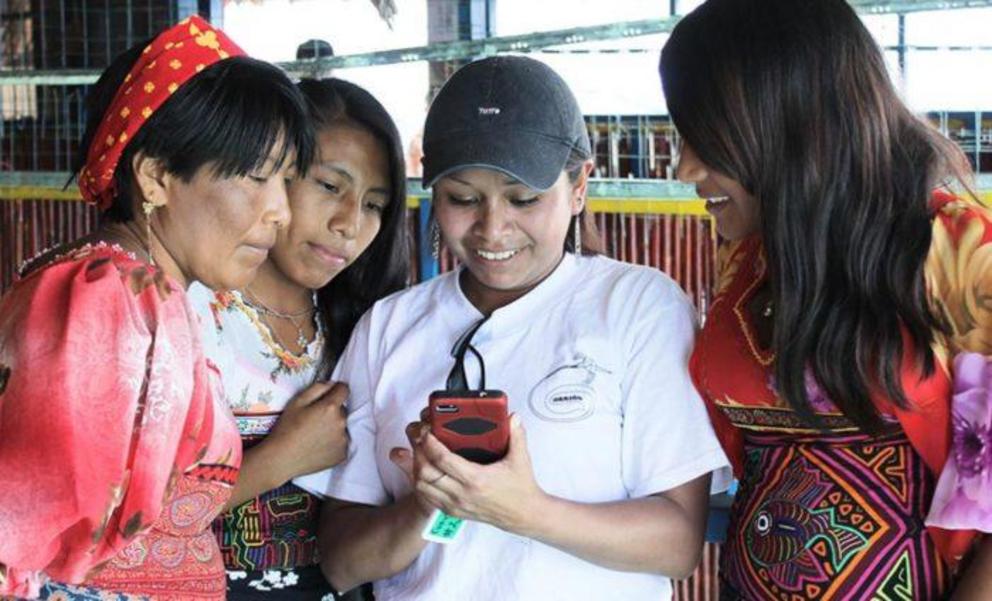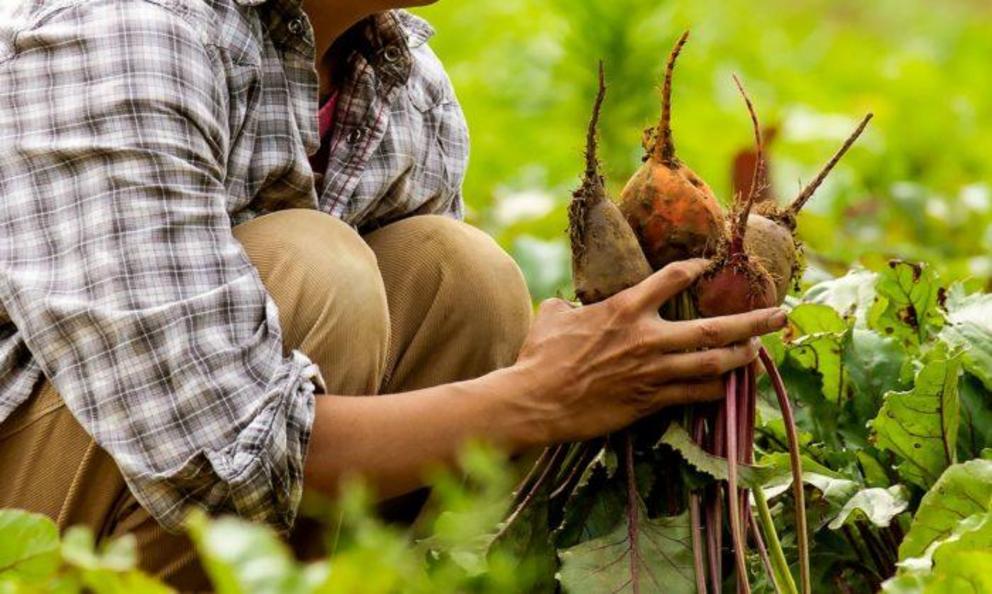Why the back to land movement is growing!
Humanity Is Living In Two Worlds Now! shows the divide between people who rely on the system and those who are becoming independent of it. Easy Ways To Prepare For Weather Emergencies shows the enormous threats to the grid now and the danger that poses for people who rely on it for electricity, heat, light, water, food, etc. The life-threatening crisis Texans were quickly thrown into when the grid failed during a cold snap in February shows how quickly things can fall apart. People in 13 other states were also suddenly thrown into crisis by the grid failure.
The GREATER Reset — Inspiring Vision For Humanity! explains that the World Economic Forum is proposing to use the economic crisis caused by the COVID lockdown to roll out The Great Reset and The Fourth Industrial Revolution. This is the real meaning of the “new normal” we have been told we will have to accept because of COVID-19.
With a multitude of crises all converging at once, it’s imperative that we look at how time-tested strategies can be combined with a modern approach to gain a newfound level of independence.
The Greater Reset: Self-Sufficiency
The Answer to the Technocratic State by Derrick Broze of The Conscious Resistance sounds the alarm. It is an essential wake-up call and a call to take action NOW! Derrick chose the name “THE GREATER RESET” as the people’s alternative to The Great Reset. The first event was held from January 25-29 with a bonus day on January 31 because The World Economic Forum held its meetings then. The second week of The Greater Reset will be from May 25-28 when the World Economic Forum holds its second week.
The article shows the schedule for THE GREATER RESET. Over 150,000 viewers from around the world tuned in. See speakers and topics for each day. Recordings are available for free for Day 1 (Agora), Day 2 (Health), Day 3 (Nature), Day 4 (Digital), Day 5 (Community), and Bonus Day. Spanish audio versions are available on the new podcast channel. The event was inspiring on a level that can be understood only by watching the videos!
Jonathan Ramirez, a permaculture designer at his Thriving Earth Farm in Tennessee, gave a very comprehensive presentation on how to create a sustainable lifestyle. Jonathan is a permaculture practitioner just outside of Nashville Tennessee. He has close to 15 years of experience in organic and subsistence farming, permaculture design, homesteading, survival skills, agroforestry, regenerative forestry, carpentry, edible mushroom cultivation, wild foraging, livestock management, and more.
<span style="display: inline-block; width: 0px; overflow: hidden; line-height: 0;" data-mce-type="bookmark" class="mce_SELRES_start"></span>
Jonathan’s Thriving Earth Farm is a highly diverse 18-acre farm where he and his family homestead, farm, and teach workshops in sustainable living. He believes the path towards human freedom must involve reforging our direct and sacred human connection to the earth and to our own survival.
The 51 photos in the slideshow on Jonathan’s site show the enormous abundance his farm produces.
Off-Grid With Doug and Stacy
The 2014 video A Catastrophic Blackout is Coming – Here’s How We Can Stop It shows that the grid is vulnerable in many ways. The only solution it proposes is for the US government to spend money shoring up the grid. Since the odds of that happening are minuscule, many people are taking things into their own hands by going off-grid now.
Back To The Land – 2014 Style shows that this movement has been building momentum for a variety of reasons. It points out:
“One of the obvious offshoots of the current localvore movement in Vermont is that individuals wishing to participate in this wonderful trend need land. And not just any land. The land must be fertile, well drained with good exposure and orientation. No small measure for a state that has more than its share of north facing slopes, shallow soils and wetlands.
The vast majority of people contacting me about real estate are expressing a need for the property they buy to be able to support at least some agricultural activities including raising animals, growing crops, woodland management all within communities that are similarly engaged. To no small degree am I reminded of the Back to the Land Movement of the 1970’s. For I was one of those who was looking to create a self-reliant lifestyle by living off the land. In honesty, I had a dream but not much of a plan.
Today’s Back to the Land movement is an entirely different landscape. Today’s farmers in Vermont have a framework of Sustainable Agriculture which has been developed and marketed to the envy of all other states. A fascinating study of how we got here and where we are now is well documented in “Greening Vermont, The Search for a Sustainable State” by Elizabeth Courtney and Eric Zencey.
This article focuses on Doug and Stacy in Missouri who have a very informative channel OFF GRID with DOUG & STACY that provides a great deal of information on a variety of topics including building raised beds, how to save seeds, and keep bee hives. They also host an annual conference. They tried the popular Back to Eden method of growing food but found that raised beds are far superior.
Former City Folks Live Like Amish Now
NEVER BEFORE SEEN FOOTAGE |10 years living OFF GRID in this TINY HOME is a tour of the home and 11 acres of Doug and Stacy, former city folks who are now happy living off the land. They advise people to take everything one step at a time. They live near the Amish in Missouri. The Amish live in 31 states in the US. Doug says he has been told by the Amish that he is now “more Amish than the Amish” now!
Her Garden produced food, flowers, and these strange veggies is a 2020 tour of Stacy’s garden. The amount of food Stacy’s organic garden produces is immense. She ferments vegetables for the winter.
Stacy’s garden is seen on the left in the photo below. Stacy teaches classes about gardening. Because they work in the garden most days, Doug and Stacy have the strength and flexibility of 20-year-olds!

The COMPLETE raised bed gardening video | building – filling – benefits is a demonstration by Doug on how to create an optimal raised bed. Doug has a horse and buggy that he uses in case there is a gas shortage! They are completely off-grid and totally independent. Many of their clothes and much of their furniture was created by the Amish. Doug says his compost is “OMRI certified”. OMRI stands for “Organic Materials Review Institute”. Doug explains that he and Stacy host the Homesteading Life Conference every August in Missouri. The conference has other great presenters and workshops.
In The RAISED BED gardening trick YOU NEED TO KNOW!, Stacy explains how she saves lots of seeds from many plants – enough to give some away.
Stacy shares her secret weapon to keep cats, rabbits, birds, and deer from eating her plants. Instead of chicken wire, Stacy puts a plastic netting over the soil in the raised beds. She shows how she raises the netting as the plants grow. If you subscribe to Doug and Stacy’s channel, you can learn many more tips – including about bee hiving!
Back to The Land Movement
Stacy’s Cooking With a Smile Cookbook has over 100 recipes.
Back from the Land: How Young Americans Went to Nature in the 1970s, and Why They Came Back shows how difficult moving back to the land can be and why it’s not for everyone. The Down East magazine focuses on Maine. The April 2020 issue deals with the Back to the Land Movement.
Amazon Description
When Eleanor Agnew, her husband, and two young children moved to the Maine woods in 1975, the back-to-the-land movement had already attracted untold numbers of converts who had grown increasingly estranged from mainstream American society. Visionaries by the millions were moving into woods, mountains, orchards, and farmlands in order to disconnect from the supposedly deleterious influences of modern life.
Fed up with capitalism, TV, Washington politics, and 9-to-5 jobs, they took up residence in log cabins, A-frames, tents, old schoolhouses, and run-down farmhouses; grew their own crops; hauled water from wells; avoided doctors in favor of natural cures; and renounced energy-guzzling appliances.
This is their story, in all its glories and agonies, its triumphs and disasters (many of them richly amusing), told by a woman who experienced the simple life firsthand but has also read widely and interviewed scores of people who went back to the land. Ms. Agnew tells how they found joy and camaraderie, studied their issues of Mother Earth News, coped with frozen laundry and grinding poverty, and persevered or gave up.
Most of them, it turns out, came back from freedom and self-sufficiency, either by returning to urban life or by dressing up their primitive rural existence—but they held onto the values they gained during their back-to-the-land experience. Back from the Land is filled with juicy details and inspired with a naïve idealism, but the attraction of the life it describes is undeniable. Here is a book to delight those who remember how it was, those who still kick themselves for not taking the chance, and those of a new generation who are just now thinking about it.
The 1998 book New Pioneers: The Back-to-the-Land Movement and the Search for a Sustainable Future shows how widespread the movement has been for decades.
Amazon Description
“Practically everyone I know is nursing fantasies about escaping the life they’re trapped in and creating one that makes more sense,” writes the editor of Utne Reader in a recent issue. “The people I most admire, though, are those who actually do it—who break free and pursue a higher calling no matter how great the risk.”
New Pioneers is about one such group of people—the hundreds of thousands of urban North Americans who over the past three decades have given up their city or suburban homes for a few acres of land in the countryside. Jeffrey Jacob’s new pioneers are ordinary people who have tried to break away from the mainstream consumer culture and return to small-town and rural America. He traces the development of the movement and identifies seven different kinds of back-to-the-lander: the weekender, country romantic, purist, country entrepreneur, pensioner, micro-farmer, and apprentice. From over 1,300 survey responses, interviews, and in-depth case studies, at both the regional and national levels, of representative back-to-the-landers, Jacob analyzes their values, use of appropriate technology, family division of labor on their acreages, and predisposition toward environmental activism.
Jacob finds that back-to-the-landers for the most part are not completely independent of the mainstream economy, and consequently, their lives do reflect the contradictions between the available conveniences of a high-technology culture and the movement’s goals of self-reliant labor. He analyzes their ambivalent attitudes toward technology—hoes and shovels versus mini-hydroelectric systems, wood stoves versus microwave ovens, and so on. After examining the experiences of the back-to-the-country people who live on the margins of a postindustrial society, Jacob creates a clearer appreciation of the preconditions necessary to translate the idea of sustainable living into concrete action on a society-wide scale.
While New Pioneers describes an important social movement, it also shows how far a group of highly motivated individuals and families can go, by themselves, in breaking away from the prevailing consumer culture. The dilemmas, frustrations, adaptations, and triumphs of these neo-homesteaders offer valuable insights to anyone contemplating a move “back to the land.”
LandBakk: Indigenous Rights Movement
The great irony of the “Back to the Land” movement is that most of the people involved are not moving “back”. They were raised in cities and their ancestors came to this hemisphere a few generations ago. So, whose land are they going “back” to? The 500 Native Nations have been in this hemisphere for over 10,000 years. So, when Indians speak of going back to the land, it has an entirely different meaning. They are still the Big Pink Elephant in the living room that most Americans ignore.
While the “Back to the Land” movement ignores the 500 Native Nations, a growing number of Westerners now recognize the value of the wisdom of these ancient cultures. Westerners have been flocking to the Amazon to drink ayahuasca with shamans.
San Diego’s First People – Kumeyaay Native Americans
The NDN Collective is an Indigenous-led organization that is leading the #LANDBACK Campaign to build a “movement for collective liberation,” which launched on Indigenous Peoples’ Day 2020 (Monday, October 12th ). On Saturday, October 10, 2020, the NDN Collective livestreamed a campaign launch webinar that explained the precedents, narrative, and demands of the campaign.

Video can be accessed at source link below.

